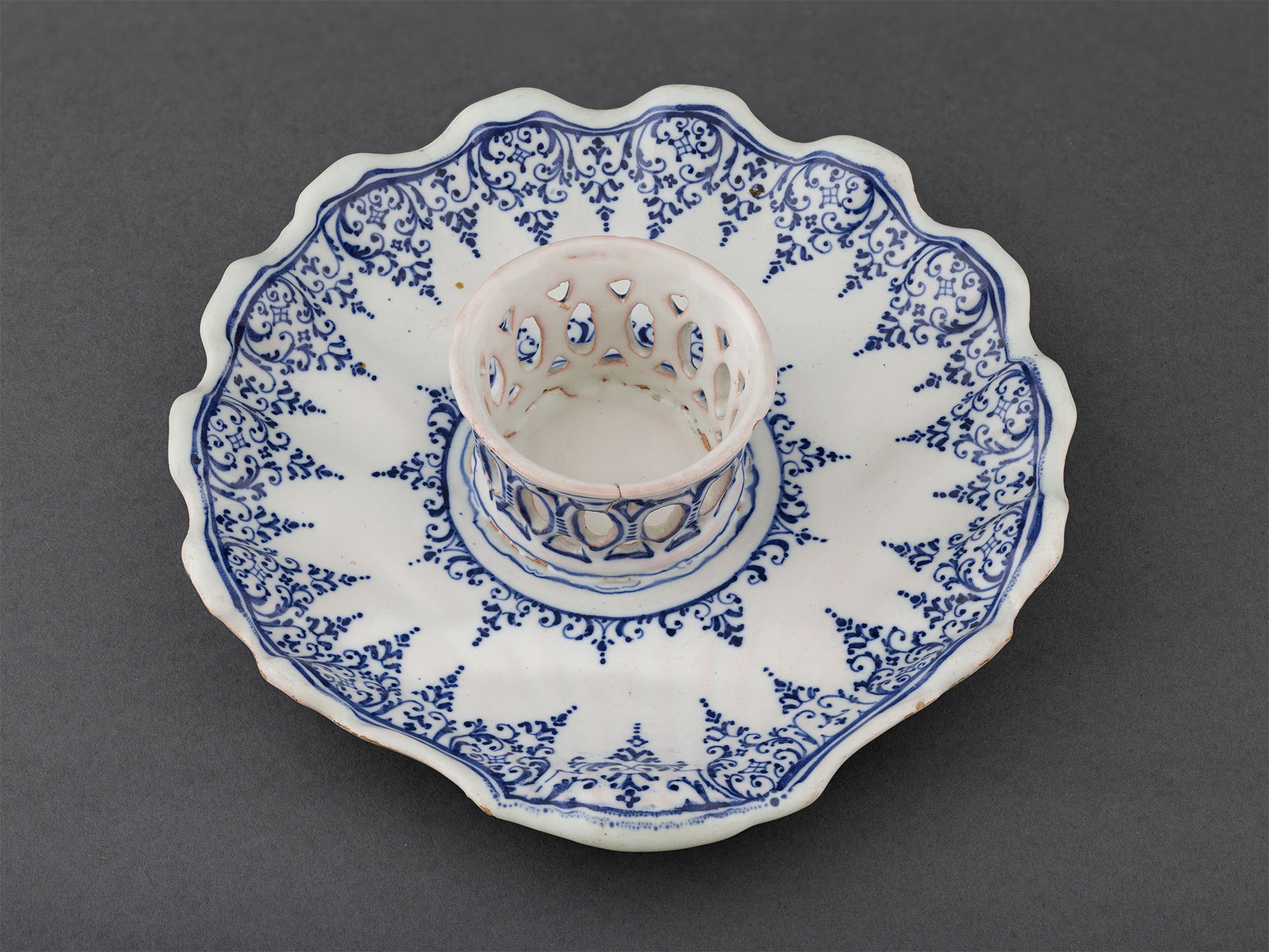
Manufactura de Alcora
Mancerina [saucer for chocolate cup]
Bérain-style series (1727-1749)
WORK INFORMATION
Ceramic, blue-decorated earthenware, diam. 19 cm
The Alcora manufactory was founded in 1727 by the 9th Count of Aranda on land he owned in what is now the province of Castellón. The aim was to create a luxury earthenware and porcelain factory that would compete with foreign manufactories. Royal privileges, including tax exemption on the export of pieces and the free entry of materials from abroad, allowed this manufactory to operate until the middle of the 19th century despite the fact that it barely made any profits.
Throughout its existence, the factory became a model of organisation and a point of reference in terms of aesthetics thanks to the recruitment of foreign specialists, artists and “secretists” who claimed to know the secret of porcelain manufacture. In addition, the creation of an apprentice academy enabled the manufactory to continue to provide top quality production.
From its foundation and throughout its first period (1727-1749), it was run by foreign artists who were responsible for setting the standard for the different ornamental styles. Édouard Roux, director of the factory between 1728 and 1735, introduced decorative motifs and forms from the manufactories of southern France. All these models were faithfully copied at Alcora and, as they spread throughout the rest of the country, they were assimilated by other pottery centres in more popular versions.
A mancerina is a circular saucer, in the shape of a shell, a vine leaf or a pigeon, with a frame to hold the jícara (handle-less cup) containing the melted chocolate. It was invented in the second half of the 17th century by the Marquis of Mancera, Viceroy of Peru. The first examples were made of viceroy silver, but during the 18th century they were also made of earthenware or porcelain.
Stylistically, this scallop-shaped mancerina is in the Bérain style, named after its creator Jean Bérain (1640-1711), the decorator of Louis XIV’s chamber and cabinet at Versailles. Inspired by his engravings published in 1711, the potters reproduced the blue lace border after the patterns in the books and the engravings of jewellers and ornamentalists of the period.

